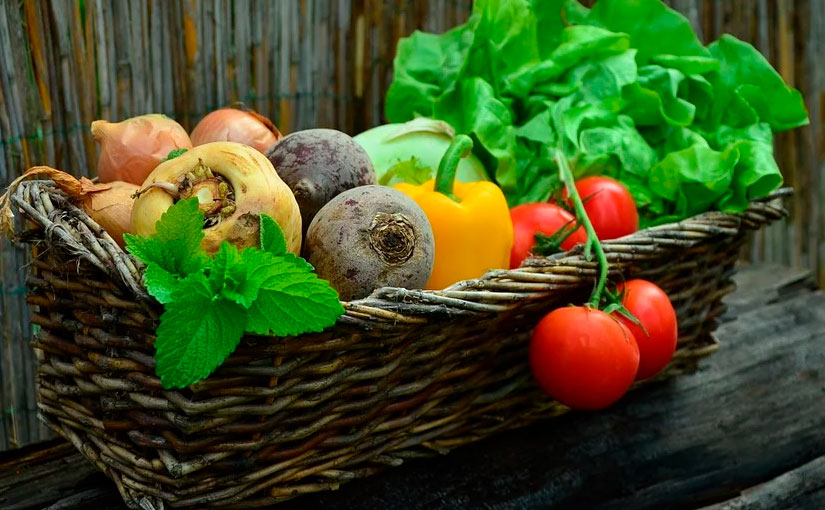If you’re new to gardening, don’t feel limited to a single space in your backyard. Indeed, edible gardening, where you add fruits, vegetables, and other food-producing plants to your landscape, adds visual interest, pollinators, and a fun way to grow food to eat.
What Is an Edible Landscape?
Edible garden design can focus solely on growing fruits, vegetables, and seeds, or you can include leafy greens in a flowerbed.
Fortunately, you can also include container vegetable gardening, cold frames, and raised beds in a landscape design.
Need privacy? Then, grow asparagus that forms a feathery forest to hide a bench or part of your front porch.
Love seeds? Then, grow sunflowers. Granted, you’ll have to share the seeds with the goldfinches.
Read more: Warm Season Grasses—How Much Water Do They Really Need?
Want to add some ground color with bold, orange blossoms? Then, plant pumpkin seeds that send tendrils that move through a tall stand of sunflowers or spill out of a container.
Here are some tips to help you plan out edible landscape design:
- Ask yourself, “Why am I planting an edible garden?” Is it to grow fresh produce, teach your children about gardening, inviting pollinators, or the desire to integrate perennials, shrubs, and vegetables?
- Combine plants that complement or contrast, but work harmoniously together in your garden space.
- Draw up a design that integrates the plants’ height, shapes, growing habits, and texture to add visual interest and balance.
- Plant your seeds or starter plants in full sun since most vegetable and fruit annuals need eight hours or more of sunlight.
- Don’t limit yourself to easy-to-grow plants, such as Swiss chard, lettuce, and carrots. Try cantaloupes, pole beans, and acorn squash.
- Consider container vegetable gardening, using whiskey barrels, window boxes, pottery, and stainless steel galvanized troughs.
- Add herbs for low-to-the-ground annuals with beautiful flowers and scents that add another dimension to your edible garden.
Learn more: What Is Organic Gardening?
How to Start Container Vegetable Gardening
You’ll need to pay particular attention when using containers for fruit and vegetable gardening.
While you can grow many fruits and vegetables in containers, realize that containers dry out quickly compared to planting directly into the ground.
Here are some tips for successful container vegetable gardening:
- Use high-quality organic soil for container planting. Don’t dig the dirt that’s in the ground. Instead, use porous potting soil that will allow water to percolate deep down.
- Consider adding compost and organic matter to the container. Compost will help with water retention, microbes and add nutrients to the container vegetable garden.
- Buy containers that have drainage holes or plan to drill a drainage hole in them. Annual vegetables and fruits don’t like wet feet that lead to root rot. So, drainage holes are a must.
- Consider a galvanized stainless steel tub that has a rubber drain already in the container. You can buy different steel tub sizes that add farmhouse décor to your landscape.
- Don’t be afraid to experiment with different fruits and vegetables in your container vegetable garden. Plant beets, carrots, lettuces, onions, radishes, spinach, Swiss chard, tomatoes, and turnips in containers.
- Grow miniature blueberry bushes, elderberries, raspberries, and strawberries in containers.
- Dedicate smaller pots for growing herbs, such as basil, borage, lavender, oregano, parsley, and other herbs that you can bring inside over the winter.
- Plan on regularly watering your container garden—including daily, deep watering in the middle of summer. Containers dry out quickly, and plants need a lot of water to survive in containers. Consider dripline irrigation for your container garden.
Continue Your Vegetable Gardening into the Fall and Winter
If you’re ready to try something new, consider cold-frame gardening. You can buy cold-frame kits at your local garden center or your big box hardware store.
If you want to build your own cold-frame garden, you can Google how to build a cold-frame for gardening.
A cold-frame garden lets you grow lettuce, radishes, beets, carrots, and other vegetables that thrive in cooler temperatures. You can reap a harvest to grace your Thanksgiving table from your cold-frame garden.
Incorporating vegetables and fruits into your landscape will give you the pleasure of growing your food, saving money at the grocery store, and delivering fresher produce to your dinner table.
How Brinly Lawn Care and Garden Attachments Help You Grow an Edible Landscape
While you don’t need earth-moving equipment to start a container vegetable garden, you need lawn care and garden attachments to create a bountiful backyard garden or your edible landscape, depending on its size.
At Brinly, our lawn care and garden attachments make taking care of your edible landscape easy and fast. Here are our attachments:
- Tow dethatchers
- Lawn sweepers
- Spike and plug aerators
- Lawn rollers
- Ground-engaging
- Tow spreaders
- Push spreaders
- Dump carts
- Garden sprayers
- ZTR attachments.
You can buy your next Brinly lawn care and garden attachment online. If you have any questions about your Brinly lawn care or garden attachment, contact our customer service today by dialing 877-728-8224 or filling out our contact form.
Sources:
LoveYourLandscape.org, Planting an Edible Garden.
Penn State Extension, Edible Landscaping – Consider the Possibilities.
SavvyGardening.com, Patio Vegetables Garden Setup, and Tips to Get Growing.


